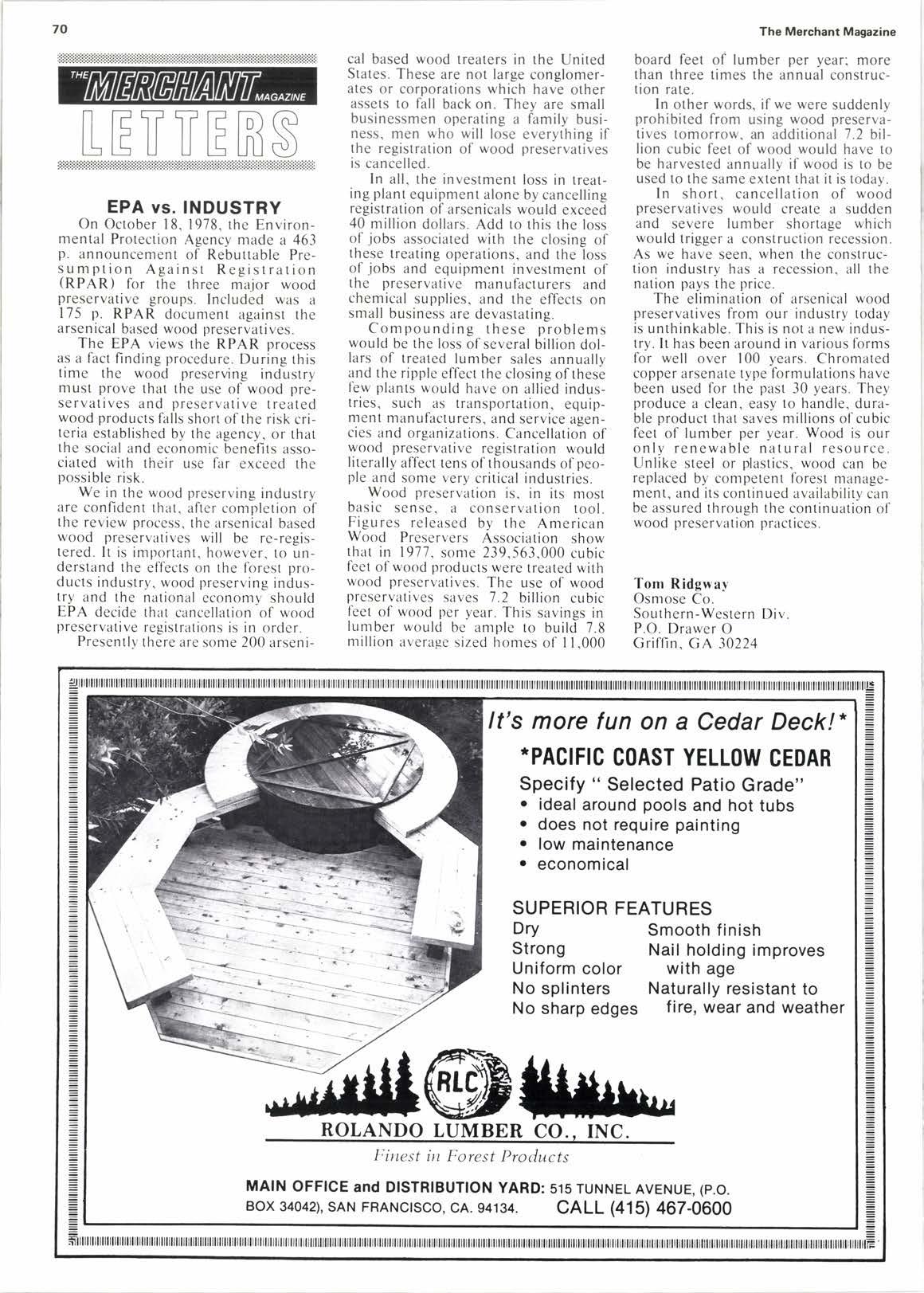
2 minute read
LET TE RS
EPA vs. INDUSTRY
On October 18, 1978, the Environmental Protection Agency made a 463 p. announcement of Rebuttable Presumption Against Registration (RPAR) for the three major wood preservative groups. Included was a 175 p. RPAR document against rhe arsenical based wood nreservatives.
The EPA views thb RPAR orocess as a fact finding procedure. During this time the wood preserving industry must prove that the use of wood preservatives and preservative treated wood products falls short olthe risk criteria established by the agency, or thar the social and economic benefits associated with their use far exceed the possible risk.
We in the wood preserving industry are confident that, after completion of the review process, the arsenical based wood preservatives will be re-registered. It is important. however, 1o understand the effects on the forest Droducts industry. wood preserving industry and the national economy should EPA decide that cancellation of wood preservative registrations is in order.
Presently there are some 200 arseni- cal based wood treaters in the United States. These are not large conglomerates or corporations which have other assets to fall back on. They are small businessmen operating a family business, men who will lose everything if the registration of wood preservatives is cancelled.
In all. the investment loss in treating plant equipment alone by cancelling registration of arsenicals would exceed 40 million dollars. Add to this the loss of jobs associated with the closing of these treating operations, and the loss ol jobs and equipment invesrment of the preservative manufacturers and chemical supplies, and the effects on small business are devastatins.
Compounding these p-roblems would be the loss of several billion dollars of treated lumber sales annually and the ripple effect the closing of these lew plants would have on allied industries, such as transportation, equipment manufacturers, and service agencies and organizations. Cancellation of wood preservative registration would literally affect tens of thousands of people and some very critical industries.
Wood preservation is, in its most basic sense, a conservation tool. Figures released by the American Wood Preservers Associalion show that in 1977, some 239,563,000 cubic feet of wood products were treated with wood preservatives. The use ol' wood preservatives saves 7.2 billion cubic f'eet of wood per year. This savings in lumber would be anrple to build 7.8 million average sized homes of 1 I.000 board feet of lumber per year; more than three times the annual construction rate.
In other words, if we were suddenly prohibited lrom using wood preservatives tomorrow, an additional 7.2 billion cubic feet of wood would have to be harvested annually if wood is to be used to the same extent that it is today.
In short. cancellation of wood preservatives would create a sudden and severe lumber shortage which would trigger a construction recession. As we have seen. when the construction industry has a recession, all the nation pays the price.
The elimination of arsenical wood preservatives from our industry today is unthinkable. This is not a new industry. It has been around in various forms for well over 100 years. Chromated copper arsenate type lormulations have been used for the past 30 years. They produce a clean, easy to handle, durable product that saves millions of cubic feet of lumber per year. Wood is our only renewable natural resource. Unlike steel or plaslics, wood can be replaced by competent forest management, and its continued availability can be assured through the continuation of wood preservation praclices.
Tom Ridgway Osmose Co. Southern-Western Div. P.O. Drawer O Grilfin, GA
30224










